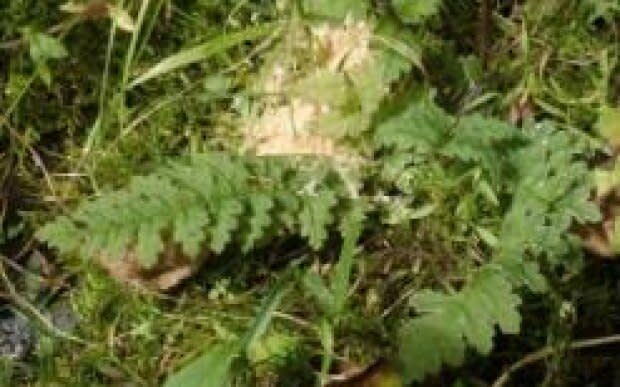Rare riverside plant called Furbish's lousewort may be on brink of disappearing
One of New Brunswick's rare species of plants could soon disappear.
Furbish's lousewort is a plant that can only be found growing on the shores of the upper St. John River in New Brunswick and in northern Maine.
Researchers have searched along the St. Francis River and down the St. John River to Grand Falls, about 65 kilometres southeast of Edmundston, but couldn't find any new populations of the plant in New Brunswick.
And only a handful of plants are left in certain areas.
"It's disturbing," said Sean Blaney, executive director and senior scientist at Atlantic Canada Conservation Data Centre.
It's a plant that is known to be very restricted to particular habitats and to particular places on the St. John River. -Sean Blaney, Atlantic Canada Conservation Data Centre
"It's a very special piece of New Brunswick's natural heritage that is very much at risk of being lost to the province."
Blaney isn't entirely sure why the plant is disappearing but said ice jamming and flooding in recent years are likely to blame.
"The flooding seems to have become more severe than it might've been in the past and sites are being scraped away and eroded away and are not being replaced," he said.
Furbish's lousewort is one of the most unique plants growing in New Brunswick and isn't closely related to anything else in eastern North America.
The plant can typically be found as early as May with a few stemless, fern-like leaves that appear as a bouquet protruding from the ground, according to the provincial Energy and Resource Development website.
The plants are legally protected under New Brunswick's Species At Risk Act and cannot be harmed.
How to spot a Furbish's lousewort
Toward the middle of summer, mature plants produce one or more flowering stems. These stems have fern-like leaves and are topped by a cluster of up to 25 small, yellow-to-brownish individual flowers, which bloom only a few at a time, according to the website description.
The plant was declared to be endangered in 198, a status most recently confirmed in 2011.
The federal government's species at risk registry points to the clearing of trees, recreational activities, invasive species, and "changes to river dynamics" as possible reasons for the plant's problems over the years.
About 10 years ago, Blaney said, there were more than 1,000 Furbish's lousewort populations. Over the past two years, that number has dropped to just under 200.

Although the results were upsetting, Blaney wasn't surprised researchers weren't able to find the plant.
"It's a plant that is known to be very restricted to particular habitats and to particular places on the St. John River," he said.
To save the species, researchers have considered removing plants still in danger of disappearing with erosion and placing them in safer sites.
They will also collect seeds from the plant and store them at the Canadian Forestry Service Seed Bank, so the plant can recolonize in the future.
"That way the New Brunswick genes are preserved."

